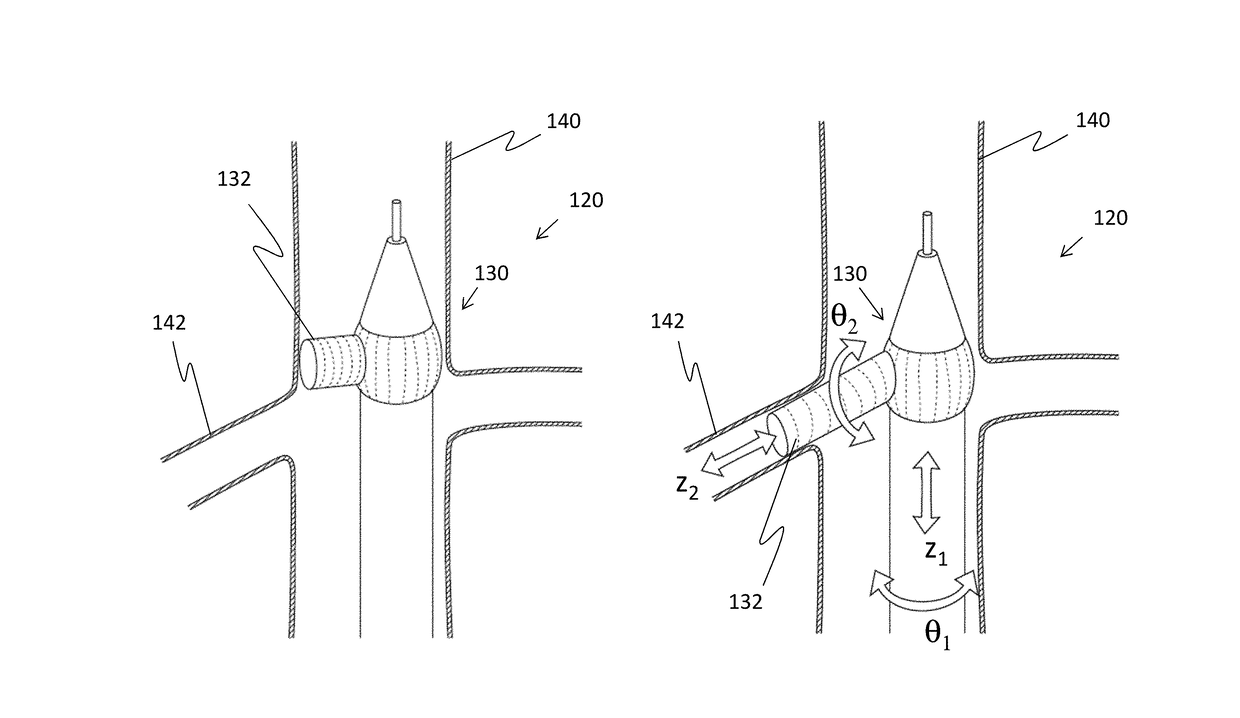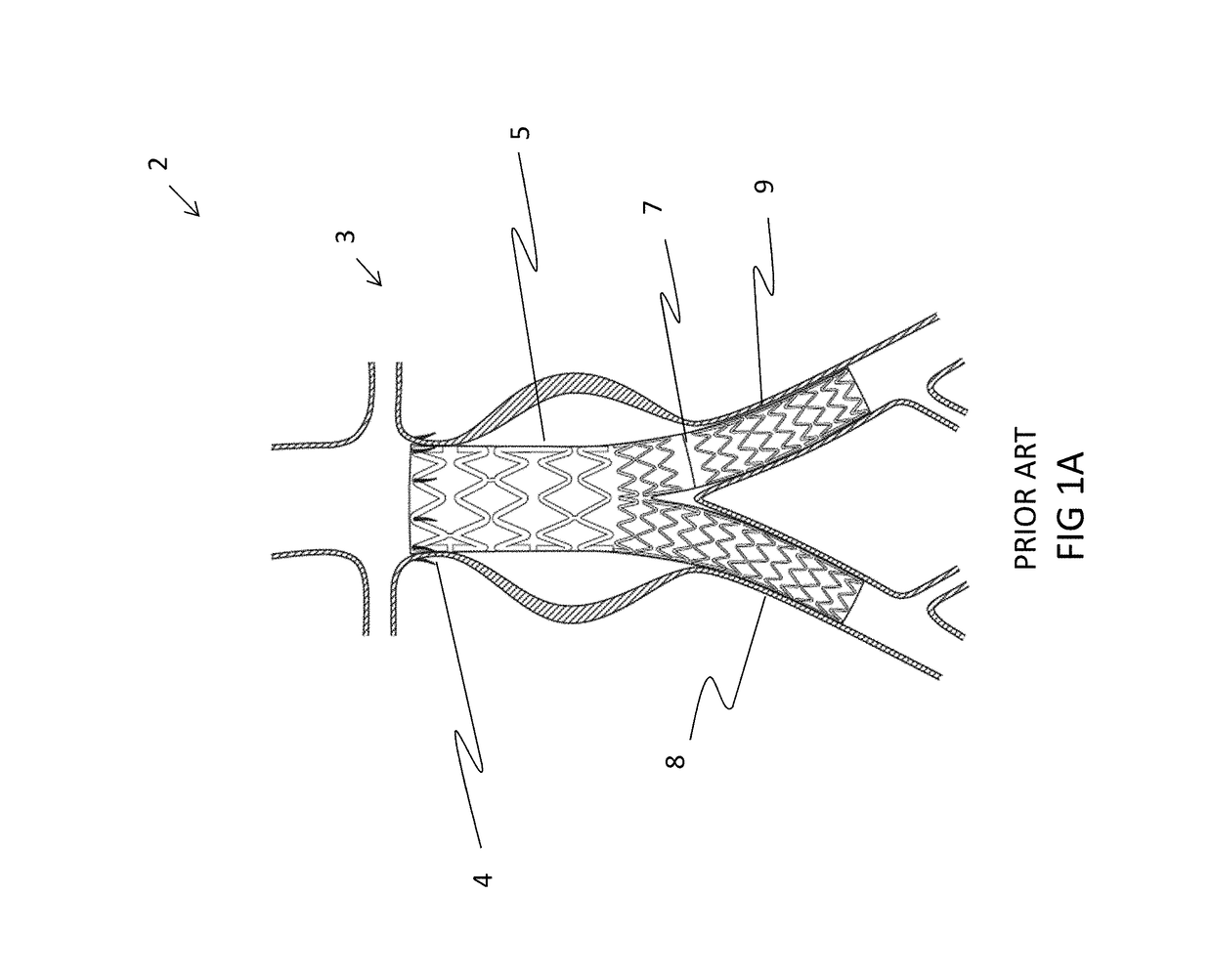Conventional stents have been used with limited success rates for treating more complex vascular problems, such as lesions at or near bifurcation zones.
As such, the variations of typical aortic renal zone configuration corresponding to Juxtarenal, Pararenal, and Suprarenal AAA's are increasingly difficult / improbable choices for such repairs.
However custom-made implants have significant disadvantages such as, but not limited to: higher fabrication cost; and very long lead times to fabricate / fit the
implant, as fabrication of custom-made implants involves time-consuming iterations between the manufacturer and physician, and the need for multiple CT scans of the patient—all additionally contributing to cost.
Off-the-shelf implants, on the other hand, generally address one or more “average” physiological bifurcation configurations—affording relatively lower fabrication cost and much quicker availability but not necessarily an optimal /
custom fit—a point which is discussed further hereinbelow.
Prior art
implant techniques in bifurcation zones are limited by catheter flexibility and rigidity, which subsequently
impact the rigidity and length of a crimped implant device inside the sheath of the catheter.
Another limitation in prior art
branch side stents or main stent frame extensions is that they typically address bifurcation inclinations of less than 70 degrees relative to the central axis of the
main vessel.
In cases where bifurcation inclinations exceed 70 degrees (ie approaching the normal, meaning 90 degrees) implant techniques become excessively complicated—as the catheter and its
payload would be subject to relatively sharp bending.
In addition to mechanical limitations imposed by crimping on prior art stents, inclusion of excessively-crimped prior art stents, combined with relatively sharp bending of the catheter can lead to mechanical fatigue / failure of the stent and thus
pose excessive risk in such procedures and / or over time.
In addition to the limitations noted above, when the implant is deployed (including the side stent) the overall, final implant configuration can be exposed to
material fatigue, as the bifurcation angle predisposes the side stent to strut fracture.
In such a configuration, deployment of a side stent is typically more complicated, for reasons as noted hereinabove.
Implant producers are faced with formidable challenges to support all sizes / scales of vessels having variable amorphic geometries, varying from patient-to-patient—all in addition to addressing parameter changes, as discussed further hereinbelow.
Some factors adding to complexity in a procedure are:long
procedure time—ie long
chronology—with a typical total
operation time between 2 to 3 hours and
fluoroscopy time between 50-70 minutes;involvement of support equipment for a FEVAR procedure (such as: a multi-sheath introducer, a marker catheter, and dedicated post dilatation balloons); andmultiple
renal artery approaches for complex angularity cases (such as through brachiocephalic and left subclavian arteries) with accompanying
increased risk of an
ischemic stroke.
In addition to the risk and complexity elements noted hereinabove, the variation of different products from different vendors and of the deployment and fixation of each component in a procedure can contribute to unpredictability of functionality of a complete implant—again exacerbating overall cost and / or risk.
As observed in the procedures outlined above, off-the-shelf implants have integrated lateral fenestrated apertures not necessarily custom-fit to the patient.
As such, it may be summarized that current prior art
implant procedures have risks, complexity, and expenses, along with concomitant long procedural chronologies.
 Login to View More
Login to View More  Login to View More
Login to View More 


